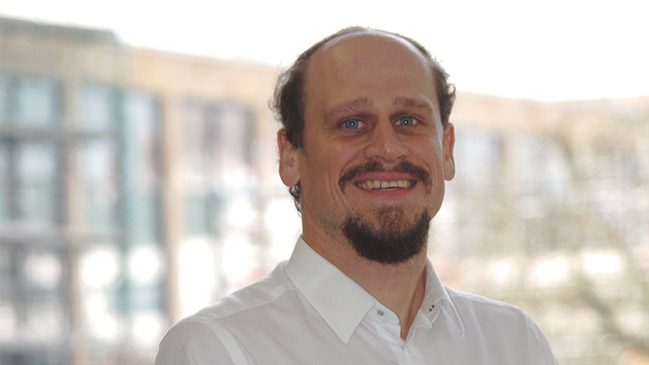New Article in “Activities, Adaptation and Aging” | 10.06.2020Non-working Older Adults Are More Active and Feel Healthier
Older adults in retirement are physically more active than those in employment. This is associated with higher levels of subjective health. BiB scientist Dr. Volker Cihlar, in cooperation with Prof. Sonia Lippke from Jacobs University Bremen, has published a new article in the journal “Acitivities, Adaptation and Aging” about the correlation between gainful employment, health and physical activity after retirement. He compares retired and non-retired people between 55 and 70 years of age by conducting interviews over three years. In the interview, the gerontologist provides insights into key findings.
 Dr. Volker Cihlar
Source: BiB
Dr. Volker Cihlar
Source: BiB
Dr. Cihlar, is a physically active life at retirement age more beneficial to health than taking retirement literally and enjoying it in a deck chair?
Definitely yes. Studies indicate that physical activity is an important factor for maintaining good health. Irrespective of age, benefits can be achieved through physical activity, even if health problems increase with age, and with increasing age, health gains cannot be achieved as in younger years. In principle, however, it is not the general case that older employees necessarily have to lose health. There are studies which demonstrate that staying at work can even be beneficial to maintaining good health. Finally, the lifestyle of each individual is decisive. Furthermore, the calendar age is not as meaningful as the subjective age, i.e. how old a person feels, irrespective of the actual age and how one’s own health is evaluated. We have therefore included these factors in our analysis to see how they affect the relationship between physical activity and employment. The main focus is on the question of differences between retired and non-retired people.
Which differences did you find?
Retired people differ from non-retired people primarily in terms of working hours, physical activity and how much energy they invest in important domains of life, as well as in objective and subjective health: On average, men work more hours than women. In general, people who work during retirement work less than those before retirement. Retired people, in particular, are more likely to be physically active than non-retired people. Overall, those who are physically active and spend more energy on being active in important life domains or are more sensitive to these domains also have a generally better health status. This process is called life investment.
What role does the influence of employment play in the realisation of physical activity?
It is possible that employment impedes a desired implementation of physical activity. Work and physical activity then seem difficult to combine, so one of them is neglected. For employed people, very often sufficient physical activity is in the back of the line then. Retirement gives the individual expanded opportunities to be more active. At the same time, however, the motivation for an expansion of employment can be reduced. In short, the less the respondents worked, the more physically active they were.
Which conclusions do you draw from these findings for successful active ageing and adequate social participation of older adults?
It might be beneficial to take a more holistic view of the organisation of work and physical activity. This would probably be more effective than simply emphasising the importance of physical activity. For older workers, the question of compatibility with the job still remains, with time and organisational problems often being the main issue. However, if the focus were placed on the psychological processes by explicitly addressing barriers and balancing work and leisure activities, a higher number of older employees would be able to be sufficiently physically active.
In view of the results of this study, older adults should be encouraged to be physically active even if they are still working and are confronted with time and organisational conflicts. There is a need to raise awareness among older workers and their employers of the benefits of physical activity and to find methods of combining physical activity with everyday working life. Offers from employers in the course of workplace health promotion are particularly useful for this purpose. In the future, this could be further developed for specific target groups.
